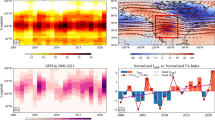Abstract
The 27 November 1945 earthquake in the Makran Subduction Zone triggered a destructive tsunami that has left important problems unresolved. According to the available reports, high waves persisted along the Makran coast and at Karachi for several hours after the arrival of the first wave. Long-duration sea-level oscillations were also reported from Port Victoria, Seychelles. On the other hand, only one high wave was reported from Mumbai. Tide-gauge records of the tsunami from Karachi and Mumbai confirm these reports. While the data from Mumbai shows a single high wave, Karachi data shows that high waves persisted for more than 7 h, with maximum wave height occurring 2.8 h after the arrival of the first wave. In this paper, we analyze the cause of these persistent high waves using a numerical model. The simulation reproduces the observed features reasonably well, particularly the persistent high waves at Karachi and the single high wave at Mumbai. It further reveals that the persistent high waves along the Makran coast and at Karachi were the result of trapping of the tsunami-wave energy on the continental shelf off the Makran coast and that these coastally-trapped edge waves were trapped in the along-shore direction within a ∼300-km stretch of the continental shelf. Sensitivity experiments establish that this along-shore trapping of the tsunami energy is due to variations in the shelf width. In addition, the model simulation indicates that the reported long duration of sea-level oscillations at Port Victoria were mainly due to trapping of the tsunami energy over the large shallow region surrounding the Seychelles archipelago.









Similar content being viewed by others
References
Ambraseys NN, Melville CP (1982) A history of persian earthquakes. Cambridge University Press, New York, pp 89–90
Beer A, Stagg JM (1946) Seismic sea-wave of November 27, 1945. Nature 158(4002):63
Bilham R, Lodi S, Hough S, Bukhary S, Khan AM, Rafeeqi SFA (2007) Seismic hazard in Karachi, Pakistan: uncertain past, uncertain future. Seis Res Lett 78:601–613
Byrne DE, Sykes LR, Davis DM (1992) Great thrust earthquakes and aseismic slip along the plate boundary of the Makran subduction zone. J Geophys Res 97(B1):449–478
Emery WJ, Thomson RE (1998) Data analysis methods in physical oceanography. Pergamon, Oxford, pp 540–549
Gonzalez FI, Satake K, Boss EF, Mofjeld HO (1995) Edge wave and non-trapped modes of the 25 April 1992 Cape Mendocino tsunami. PAGEOPH 144:409–426
LeBlond PH, Mysak LA (1978) Waves in the ocean. Elsevier Scientific Publishing Company, Amsterdam, pp 219–227
Mysak LA (1980) Topographically trapped waves. Ann Rev Fluid Mech 12:45–76
Okada Y (1985) Surface deformation due to shear and tensile faults in a half-space. Seismol Soc Am 75:1135–1154
Pendse CG (1948) The Mekran earthquake of the 28th November 1945. Sci Notes Indian Meterol Dep 10:141–144
Rajendran CP, Ramanamurthy MV, Reddy NT, Rajendran K (2008) Hazard implications of the late arrival of the 1945 Makran tsunami. Curr Sci 95:1739–1743
Sindhu B, Suresh I, Unnikrishnan AS, Bhatkar NV, Neetu S, Michael GS (2007) Improved bathymetric datasets for the shallow water regions in the Indian Ocean. J Earth Syst Sci 116:261–274
Acknowledgments
We thank Yuichiro Tanioka for providing software for computing Okada’s solution and the Surveyor General of India for the tide-gauge data. We thank S. R. Shetye and D. Shankar for useful discussions. We thank Matthieu Lengaigne for his valuable comments on the manuscript. We acknowledge Indian National Centre for Ocean Information Services, Hyderabad, and Council of Scientific and Industrial Research, New Delhi, for financial support. This is NIO contribution 4976.
Author information
Authors and Affiliations
Corresponding author
Electronic supplementary material
Below is the link to the electronic supplementary material.
Below is the link to the electronic supplementary material.
Below is the link to the electronic supplementary material.
Below is the link to the electronic supplementary material.
Rights and permissions
About this article
Cite this article
Neetu, S., Suresh, I., Shankar, R. et al. Trapped waves of the 27 November 1945 Makran tsunami: observations and numerical modeling. Nat Hazards 59, 1609–1618 (2011). https://doi.org/10.1007/s11069-011-9854-0
Received:
Accepted:
Published:
Issue Date:
DOI: https://doi.org/10.1007/s11069-011-9854-0




